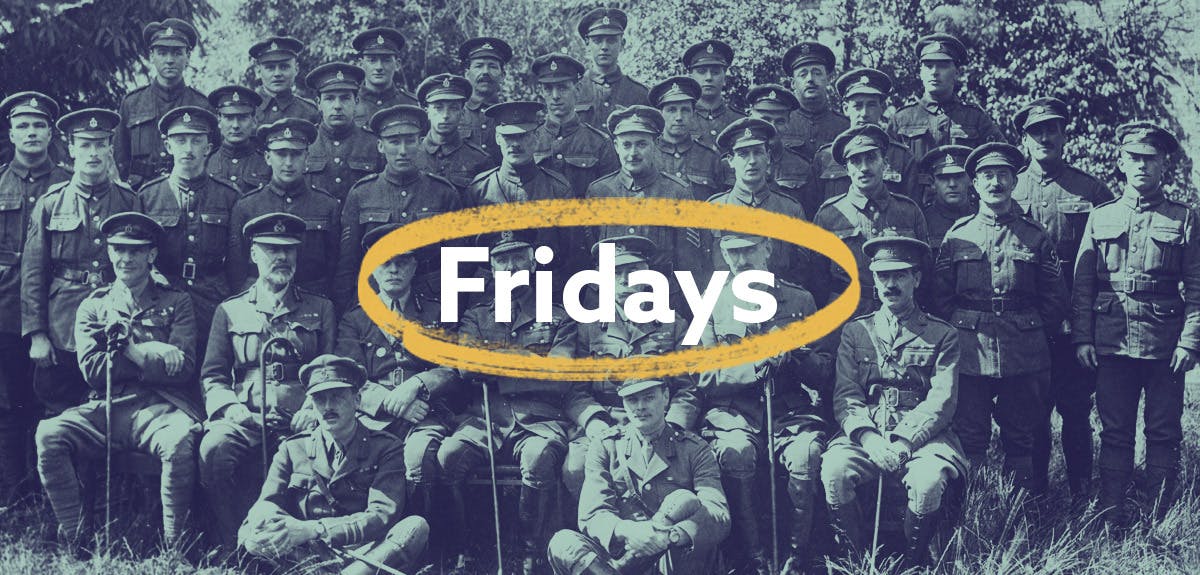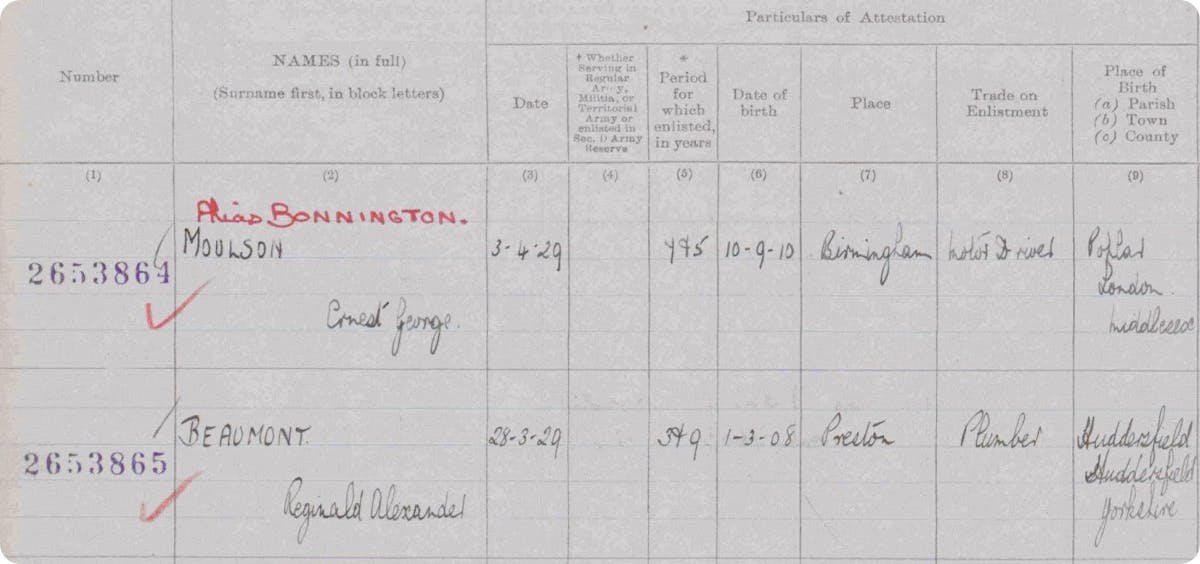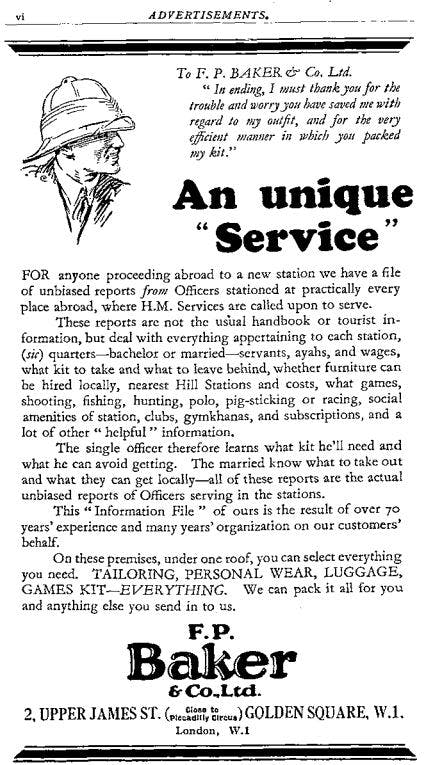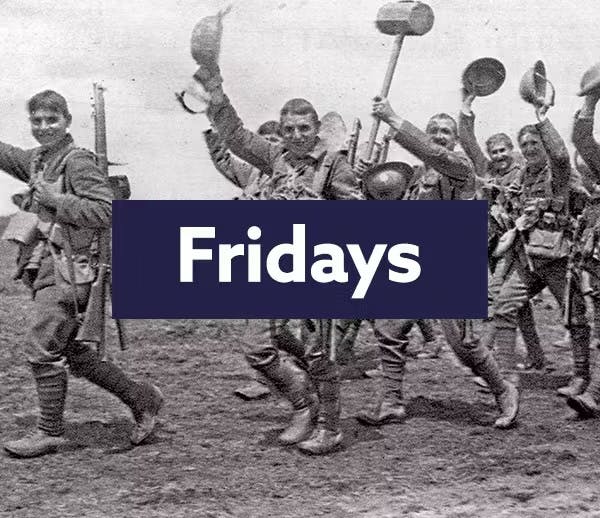New British military records from World War 2 and beyond
3-4 minute read
By Liam Kelly | May 29, 2020

We're rounding-off a month of Second World War releases with new military records from the British Army and Royal Air Force.
If you've got ancestors who served in the Royal Air Force, Royal Engineers or Coldstream Guards, you’ll want to see what’s new this week on Findmypast.
British Army Service Records
This essential military collection has been enhanced with over 89,000 records from the Coldstream Guards, spanning from 1800-1947.
Comprising of many different regimental histories, there are records including discharge books, court-martial books, decorations and rewards, and officers' statements of services.

A Coldstream Guards enlistment register including the soldiers' service numbers, dates, and places of birth and occupations.
The Coldstream Guards are the oldest regiment in the British Army in continuous active service. With origins dating back to the English Civil War, the regiment has served in every major conflict and many minor ones since it was raised.
These fascinating records have been published in partnership with The Coldstream Guards Charitable Fund.
Royal Engineers Journals 1939-1945
This unique collection is formed from The Royal Engineers Journal, a private newspaper that was converted into a journal and supplement in magazine form. In it, you can discover what life was like for anyone who served with the Royal Engineers during the Second World War.

An advert from the Royal Engineers Journal, September 1939.
Formed in 1716, the Royal Engineers assist the British Army in the field by providing engineering and technical support. Known as ‘sappers', the corps has served in all of the British Army's campaigns.
The Royal Engineers played prominent roles in both World Wars. During the First World War, the corp's duties included tunneling, trench-building, forestry, quarrying, gas warfare, inland water transport, aerial survey, topographical photography, and camouflaging techniques. New responsibilities were added in the Second World War including bomb disposal, mine clearance, airfield construction, laying Bailey bridges, and the use of tanks adapted for battlefield engineering.
One of the Royal Engineer's greatest achievements during World War 2 was the construction and operation of the Mulberry Harbour for the Battle of Normandy in 1944.
Royal Air Force, Operations Record Books 1939-1945
We’ve added over 65,000 transcripts that provide a daily record of events within each RAF squadron during the Second World War. Operations records can reveal additional details about your ancestor's time serving in the skies including:
- Their squadron
- The year and date of the operation
- A description of the operation
These operation record books can be used to create a list of all the flying operations that RAF aircrew completed during the war. They are also an excellent resource for compiling a record of a squadron's operations.
Included in these records is 617 Squadron, better known as the Dambusters for their actions during Operation Chastise. On the night of 16-17 May 1943, Wing Commander Guy Gibson led 617 Squadron on a bombing raid to destroy three dams in the Ruhr valley. The dams were protected with torpedo nets in the water and anti-aircraft guns defended them against enemy bombers. But 617 Squadron had a secret weapon - the 'bouncing bomb'.
British Royal Air Force, Combat Reports 1939-1945
We've released over 30,000 transcripts for combat reports that were filled out by RAF pilots or air gunners after they had encountered enemy aircraft on operational flights. They can reveal fascinating facts for your family tree including:
- Your ancestors' names
- Their rank and squadron
- The year and date of combat
- Other dates of combat
Consisting of either a Personal Combat Report or a Fighter Command Report, these records cover the action that was seen by the squadrons, wings, and groups that served with Fighter Command, Bomber Command, Coastal Command, and the Fleet Air Arm.
In the reports, the pilot or air gunner described how many rounds they used, what hits they achieved and if the aircraft was destroyed, damaged, or considered as probably destroyed.
Included in these records is Group Captain Sir Douglas Bader. He was commissioned as an officer in the Royal Air Force in 1930 but after only 18 months he crashed his airplane, became a double amputee as a result, and was discharged. After the outbreak of the Second World War, Bader rejoined the RAF. Initially, he was a member of 222 Squadron but was soon promoted to lead 242 Squadron.

Bader is credited with 22 aerial victories, four shared victories, six probable victories, one shared probable victory, and 11 instances of damaging enemy aircraft. Owing to these achievements and his continuous attempts to escape a prisoner of war camp after he was shot down, Bader was immortalized in the book and movie Reach for the Sky.
All of this week's Royal Air Force records have been published in partnership with The National Archives. Combine them with our service records and lists to build up a richer understanding of your relative's time in the RAF.
Did you know Findmypast is on Pinterest? From quirky old photos to helpful research tips, follow our Pinterest boards for your visual family history fix. This week’s highlights include a duck for rent!




